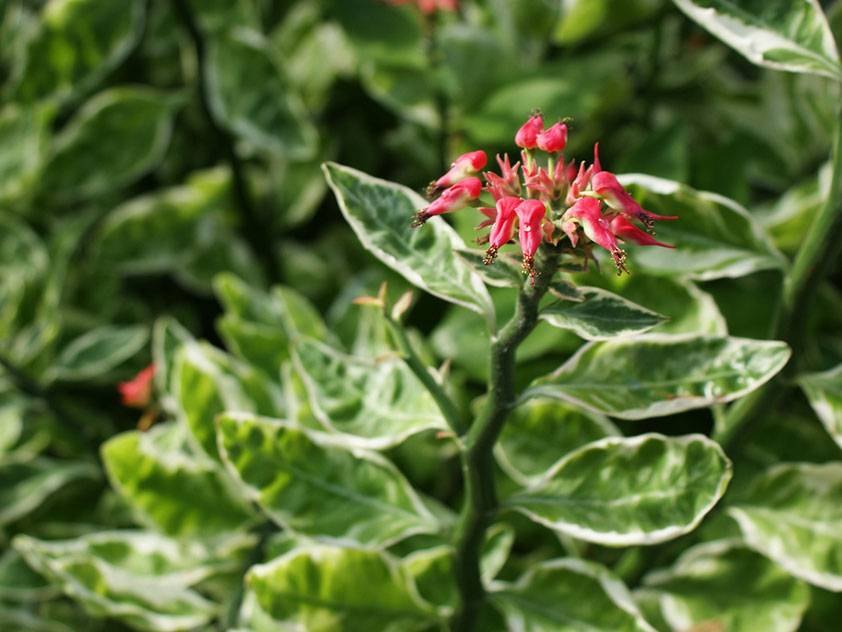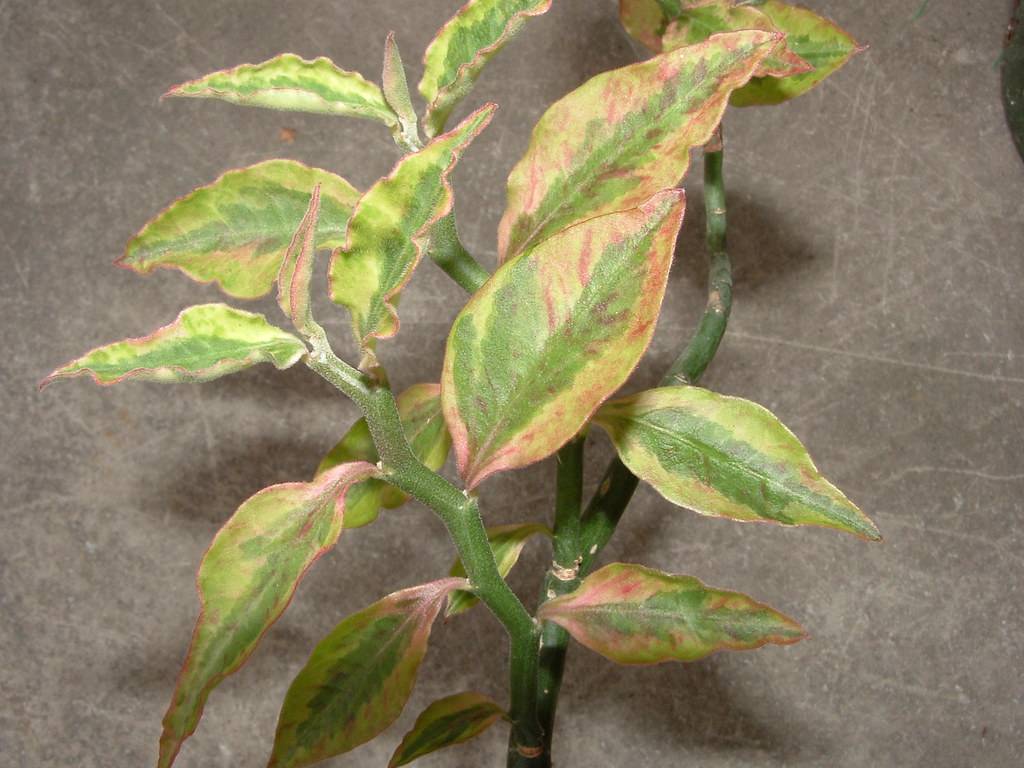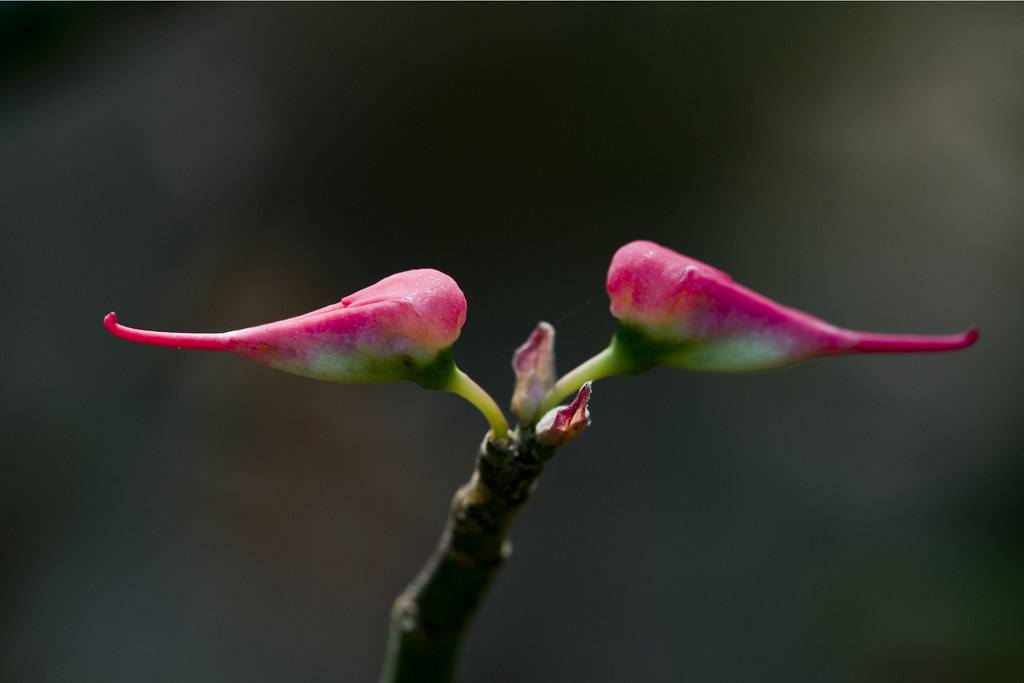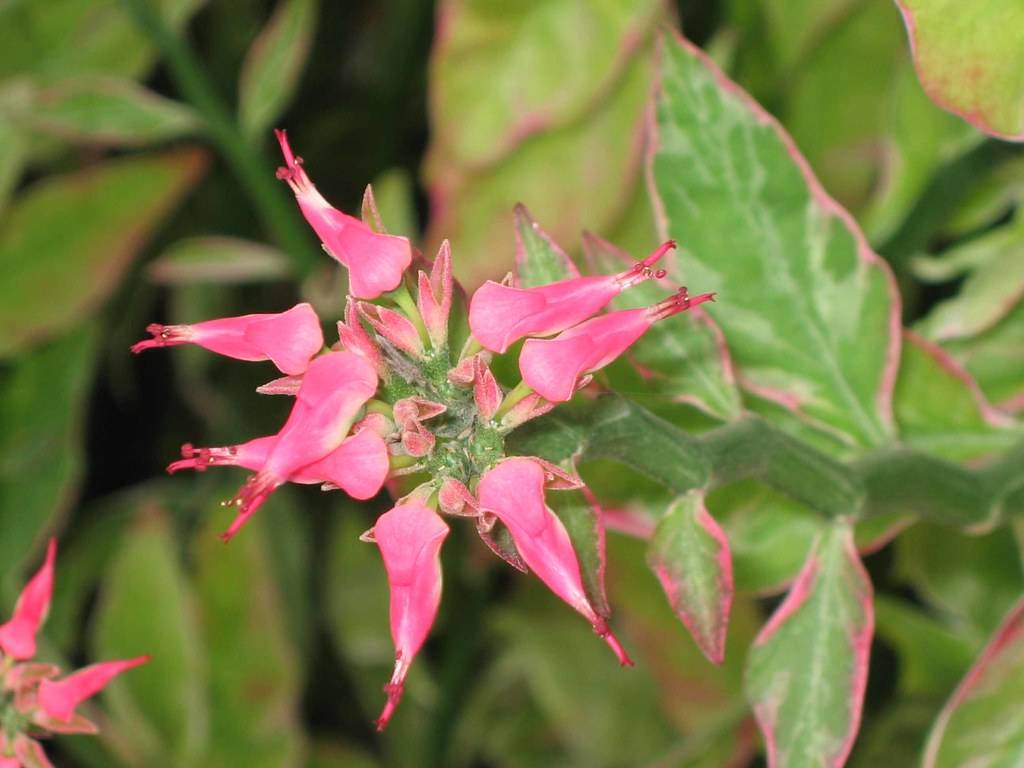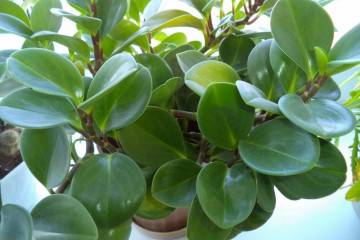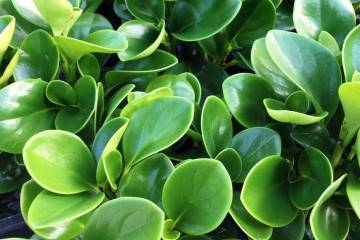Pedilanthus: home care and breeding methods
Content:
Pedilanthus is a houseplant with an original appearance. The owner of variegated leaves is especially distinguished - pedilanthus variegated. There are several types for growing at home, but in general, caring for pedilanthus does not take much time.
Pedilanthus flower: general information
Pedilanthus is a genus of decorative flowering shrubs and trees of the Euphorbia family. The name consists of two words, which are translated from Greek as "shoe" and "flower". Indeed, if you look at the blooming pedilanthus, in the form of its buds, you can see the outlines of a pointed shoe.
In nature, pedilanthus is found in the tropics and subtropics of North, Central and South America. Its species grow in large numbers in Mexico and the US state of Florida. It is Mexico that is considered the original homeland of the plant.
The plant looks like a branching shrub or tree up to 3 meters high. Leaves are oval or elongated with sharp ends, often wavy, pubescent or smooth, dark or light green. Leaves are sessile or grow on a small petiole. There are leafless species that grow in arid regions.
Inflorescences are small, apical, pink and red, in some species are quite large. Many flowers form whole clusters. It is the inflorescences that give the plant such an unusual look: pedilanthus fans appreciate their unusual shape.
The Pedilanthus genus has about 15 species. Among the most suitable for the home are the following:
- titimaloid;
- finca;
- large-fruited;
- koalkomanensky.
Pedilanthus titimaloid and finca are the most popular types for indoor cultivation. They look decorative, easy to care for.
Pedilanthus: home care
Pedilanthus loves diffused sunlight, so it is better to protect it from direct rays. The pot can be placed next to a window facing south, southeast. In winter, it is recommended to use additional lighting and extend the daylight hours.
The plant appreciates fresh air, so the room needs to be ventilated more often or the pot should be taken out to the balcony. As a general rule, indoor plants do not tolerate drafts well, and pedilanthus is no exception.
In summer, pedilanthus tolerates high temperatures, up to + 25 ° C. In winter, keep it in cooler conditions, ideally up to 18 ° C, then the pedilanthus will not shed foliage so much. In addition, in winter, in a too warm room, the flower stretches out - this reduces its decorative effect.
Some types of pedilanthus are succulent, but at home their ability to accumulate water is reduced. When watering, a general rule is used, according to which you need to focus on the upper layer of the substrate: if it is dry, you can water it with loosening. The main thing is not to fill the pot. It is recommended to observe the turgor of the leaves: soft, sagging plates indicate that the leaves lack moisture. Conversely, if the plant is overdried, it sheds its leaves.
Pedilanthus feels quite comfortable in a room with dry air. In summer, the plant can be delicately sprayed with settled water, in winter this is usually not done.
The plant is suitable for a neutral soil mixture, a third of which is sand. The soil must be leaky, breathable and water-permeable. A prerequisite is a good drainage device - it is enough to lay a layer of expanded clay a few centimeters.
Pedilanthus does not need constant feeding. From time to time, you can introduce fertilizers for succulents without nitrogen - this element has a bad effect on the roots. The plant normally assimilates feeding with potassium, phosphorus, iron. Fertilizers are not applied in winter.
Types of pedilanthus: color, how it blooms
Under indoor conditions, several types of pedilanthus are comfortably grown, while different species, having a certain similarity, have their own characteristics, thanks to which they can be distinguished from each other.
Pedilanthus titimaloid
A favorite type of flower growers, titimaloid pedilanthus is characterized by simple home care. Its leaves are wavy or slightly wrinkled, have a characteristic variegated (variegated) color: white streaks on the plate pass in the middle or on the sides, sometimes a pinkish edging appears.
The stalk is zigzag - in the place of growth of a new leaf, the trunk makes a turn in the opposite direction. For this plant is sometimes called the "Devil's Ridge". Depending on the subspecies, the angle of inclination is different - from barely noticeable to sharply expressed. Stems are often twisted, especially long ones.
The flowers of this species are small and numerous; with rich flowering, they hang in bright red clusters. All the beauty and unusual shape of the inflorescence can be seen only up close. Flowering time is from July to October.
Finca
It is a shrub with bright green leaves on short petioles. The leaves have smooth edges, a slight gloss is possible, the trunk is of a strongly pronounced zigzag shape. As fresh foliage appears, the plant sheds the lower leaves - for Finky this is normal.
Koalkomanen variety
A plant with low stems, often takes the form of a bush. Unlike the titimaloid variety, the inflorescences are large, the original shape of the flower can be easily seen with the naked eye. To some, the flowers resemble a shoe, and to others - the head of a small bird with a sharp beak. So, in English, the alternative name of the Koalkomanen pedilanthus is “bird flower plant”.
Large pedilanthus
The stem is thickened, is able to accumulate moisture, the leaves are absent - the inflorescences appear directly on the top of the bare green stems. During the dormant period, the plant looks like lifeless - slightly ornate tentacle stems without inflorescences and leaves, instead of them only scales along the entire length. It is a succulent form of the plant, native to the arid regions of Mexico.
Variety of Nana
This variety has a fleshy, thickened stem. Leaves are oval, slightly elongated, bright green and shiny. The leaves grow alternately, exactly on the sides of the stem. They fit snugly together, which gives the plant a neat look.
Bloom
The flowering of pedilanthus strongly depends on the conditions of detention:
- no temperature changes and drafts;
- daylight hours - at least 12 hours (if necessary, use artificial lighting);
- stimulating the formation of inflorescences (special fertilizers).
During the growing season, it is necessary to strictly observe the irrigation regime, do not overdry or overmoisten the soil in excess. An interesting fact: in the titimaloid pedylanthus, the leaves begin to turn slightly pink before flowering.
Pruning and replanting
At home, pedilanthus is cut and transplanted from time to time in order to preserve the youth and beauty of the plant.
Pruning
At a young age, the plant needs to be cut regularly - this will enhance branching, add decorative effect. Such pruning is called formative, and the sooner you start to do it, the more accurate the shape of the plant will be.
The titimaloid species and Finka are pruned without fail: the stems are shortened when they reach a height of 25-30 cm. The pedilanthus is pruned during the period of active growth - April and May. Lateral shoots are also pruned.
Transfer
The root system of the plant is quite compact. It is weak, grows slowly, so annual transplants are not required. Cases when to transplant:
- the pot has become small;
- substrate replacement is required;
- the roots rot;
- the pot was smashed.
The transplant is carried out by the transshipment method, while preserving the earthen coma on the roots. If it is necessary to remove rotten roots, the roots are delicately cleaned of the substrate, the damaged processes are cut off. After transshipment with renewal of roots, the plant is watered with the addition of a root growth stimulator.
To make it easier to get the flower out of the pot, the soil must be moistened before transplanting. The height of the pot should match the height of the roots, plus a few centimeters for the drainage layer.
Pedilanthus: reproduction
At home, pedilanthus can reproduce in two ways: cuttings and seeds.
Rooting cuttings
During the period of active growth, pedilanthus is propagated by cuttings:
- young shoots 10-12 cm long are cut from the top of the plant (at the same time, a neat crown can be formed);
- the bottom sheets are removed;
- the cuttings are washed under water from milky juice and dried on a sheet of paper;
- cuttings deepen in a slightly moistened substrate with a high sand content (up to two-thirds).
Rooting will take up to five weeks. When there are enough root shoots, the young plant can be transplanted into an individual pot (most often, two months after cutting the cuttings). Most often, propagation by cuttings is chosen for pedilanthus.
How to propagate pedilanthus by seeds
This is a difficult process, since the germination rate is low. Therefore, this method is better suited to experienced growers who have already had to work with seeds. Much depends on the quality of the planting material. Sometimes it is better to take not purchased seeds, but to collect the seeds of the mother plant, if possible.
The seeds are spread on a moist succulent substrate or clean sand. A layer about 5 millimeters thick or slightly more is poured on top. The container is covered with oilcloth or glass.
To grow seeds, you need to provide a high temperature, 25-27 degrees Celsius. The greenhouse is placed in a bright place and aired daily to prevent the appearance of fungus.
When sprouts appear, the lid is removed for good, the container is rearranged in a brighter place, but not in the sun. With the appearance of two or three leaves, young seedlings can be planted in separate pots. Florists who manage to grow a pedilanthus from seeds can congratulate themselves on great luck.
Possible diseases
The plant is susceptible to fungal diseases, which can provoke improper watering or feeding. Rotten shoots are pruned about 1 cm below the affected area. If rot is found on the roots, the defective shoots must also be removed.In case of complete damage to the root system, it is more expedient to put the plant on cuttings.
In addition, pedilanthus is attacked by pests common to indoor plants: tick, scale insect, aphid. They are fought with home remedies or with the help of horticultural chemicals. So, pests are manually removed from the plant, and then the leaves and stems are treated with a solution of laundry soap with the addition of lemon juice.
What to do if the leaves fall off the pedilanthus? During the dormant period, this is normal, and during the season of active growth and flowering, the reason may be a lack of light or errors in watering.
Subject to the care regimen, the indoor pedilanthus flower pleases with the richness and decorativeness of the foliage, and when it blooms on the windowsill, this is a whole event for the household. This "Mexican" feels great in homes and outside the subtropics.
